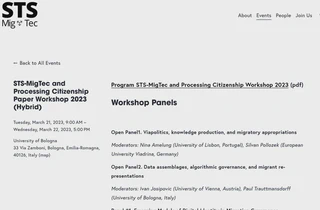The biography of an identification software system
Mar 21, 2023· ·
0 min read
·
0 min read
Wouter Van Rossem

Abstract
Systems and infrastructures for identifying and registering mobile populations have many facets and long development histories, and the researchers’ partial perspectives will shape their understanding of the technologies and practices involved. To study phenomena with so many moving parts, researchers often conduct their studies at multiple sites or include human and non-human actors that shape identification encounters. This paper proposes multi-temporal sampling as a method for understanding the long-term development of identification systems and infrastructures. Two heuristics are proposed for selecting such moments in the lifecycle of identification technologies. The first heuristic employs SCOT’s concept of interpretative flexibility of artefacts to identify significant moments when the meanings of identification practices and technologies are challenged, changed, or closed down. The second heuristic employs the concept of gateways from infrastructure studies to highlight moments when software systems and infrastructures intersect. This article makes two contributions to the research agenda of long-term perspectives on identification based on data gathered through fieldwork at an IT vendor of a software for matching people’s identity data. First, by tracing the interpretive flexibility of the software, it is possible to see how this private company became enrolled in security logics. Second, gateway moments make it possible to see the infrastructural compromises (Dijstelbloem, 2021) necessary when adapting globally honed technologies to new settings. When the software was integrated with an EU system, infrastructural compromises were made to allow backwards compatibility with MS systems. Together, these findings shed light on the activities of under-the-radar actors, such as software vendors, whose distribution and reuse of software packages have long-term implications on identification practices and infrastructures in a variety of contexts.
Event
Location
University of Bologna, Bologna, Italy